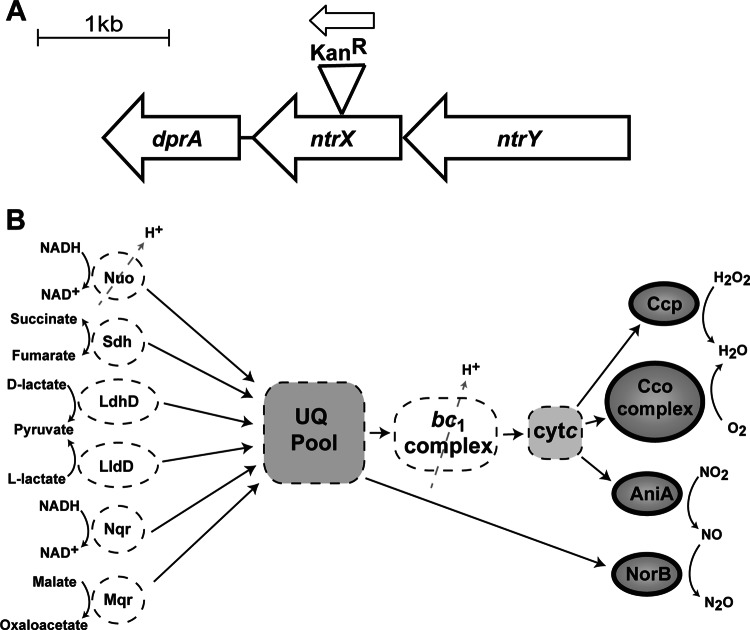Fig 1.
(A) Construction of an ntrX::kan insertion-deletion mutant in N. gonorrhoeae strain 1291, using a nonpolar promoterless kanamycin resistance cassette as detailed in Materials and Methods. The ntrY gene is upstream of ntrX. No polar effects are expected on the gene downstream of ntrX, dprA, as there is a large intergenic region of >80 bp between these two genes. The dprA gene is annotated as DNA processing chain A (NGO1865) in the FA1090 genome. (B) Summary of the N. gonorrhoeae respiratory chain. A number of different substrates can be used to provide reducing power to the electron transport chain, which transfers electrons from the ubiquinone-ubiquinol pool (UQ pool) to cytochrome c (cyt c) via the cytochrome bc1 complex. Electrons are then transferred to a number of final electron acceptors—oxygen (cytochrome cbb3 oxidase [Cco]), hydrogen peroxide (cytochrome c peroxidase [CCP])—or to nitrite and then nitric oxide (nitrite reductase [AniA] and nitric oxide reductase [NorB], respectively). The latter two enzymes comprise the partial denitrification pathway present in the gonococcus. NorB takes electrons directly from the UQ pool and is only energy conserving if used in tandem with the Nuo NADH dehydrogenase. All four terminal reductases (Cco, CCP, AniA, and NorB) are downregulated in the Ng-ntrX mutant.

